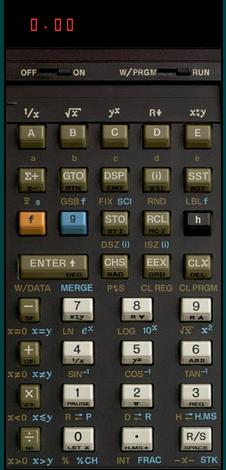A funny thing happened on the way to fixing a HP21 emulator.
I’d been updating the software to deal with a 12 digit display and started with the 15 digit display in my HP67 emulator. I haven’t fitted the original fix yet, but on the way I ended up with a HP29 emulator and now an updated HP67 emulator.
The ’29 doesn’t have a card reader so, in the real world, every time you want to load a new program you have to key it in by hand. Life was a bit better with the ’29 than most prior models because it remembered programs even when it was switched off. Hence you no longer had to key in the same program again; only different ones.
With the HP29 emulator, I wanted to make this task easier and I came up with a method that allows pasting a pre-written program in, or copying an entered one out. There were a number of other niceties added that should always have been present in my original HP67 calculator emulator. So, having figured them out for the HP29, I wanted to retro-fit similar things to my HP67 calculator emulator.
Very few got to see the original that the recent spate of emulators was based on because I wasn’t parting with it unless someone paid me to change my mind. The later ones have been released for free so the updated HP67 emulator is now being released for free too. Hopefully you’ll like it.
It looks like:

and runs on any phone, tablet or browser (that supports HTML5).
I liked the copy and paste idea so much I added that to the HP67 emulator, even though it has a card reader. The twist is you can copy and paste program or data “cards”; not just program information. These include settings such as the angle mode and the value of the flags. They also include labels for the “magnetic” card for when you slide it into the slot above the A to E keys.
Copy and Paste also allows it to work on phones as access to the real filesystem, especially from a HTML5 page, is difficult and varies from device to device. That said, the card reader is functional and allows reading and writing cards from and to the HTML5 storage on the device. If you want to put a card into a regular file, load the card and then use copy and paste it wherever you like.
One of the other changes was inspired by Jacques Laporte (www.jacques-laporte.org). He has been updating his microcode simulator and added a tab to the right of the card slot. Clicking that loads a “mag” card just like on the real thing. I’d already been doing something similar (the entire area above the A-E keys is click sensitive) but seeing the ” Crd ” in Jacques’ simulator inspired me to make a few tweaks. The original just fired up a page to allow you to choose a card to load or to name one to save on (or reuse an existing one). This version puts the ” Crd ” message in the display just like the real thing, and then waits for you to tap/click the card slot. That sure brought back memories. I hope you like it.
The product page is here.








